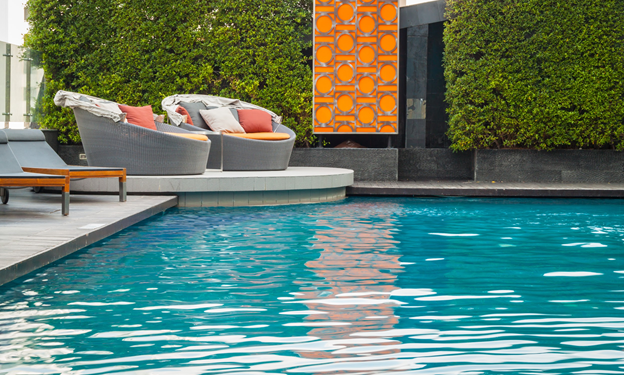Swimming pool offers you a perfect place to cool off during hot summer days, host parties, enjoy private times with family, and other endless benefits.
But this luxury comes with a lot of responsibilities. You have to look after its maintenance, utility, durability, and overall aesthetics,
You’ll need to think about the pool coping too. Coping is an important part of the pool design and safety feature.
Read this blog to understand the meaning, material, benefits, and need of pool coping:
Table of Contents
What is pool coping?
Also known as the bond beam, the upper surface of the pool has exposed steel that can pose potential risks to you and your pool.
Coping is a safety cap that covers this wall and the outer edges of a pool making it safer for swimmers.
Mostly, pool coping has an outward slant that directs any water flowing out of the pool into the deck drains and away from your pool.
When you grab onto the outer edge to get out of your swimming pool—that’s the coping structure you are clutching.
Commonly Used Material
Limestone, flagstone, concrete, and composite materials are some of the common materials for pool coping.
Metal and wood are also options. However, they tend to wear and tear and require regular care and maintenance.

Benefits
Some of the benefits of pool coping are:
- Maintenance
It offers structural support to your pool and helps maintain its shape.
- Adds appeal
Pool coping adds an extra splash of style and class to the overall design. It gives your outdoors a cleaner and more finished look.
- Safety
This added feature offers a non-slip surface to people walking along the edge of the pool and prevents them from slipping and falling.
- Best for summers

As the temperature soars, it can be hard to walk on a concrete floor. However, some coping materials stay cool even during summers. This allows you to enjoy your pool and deck without burning your feet.
Need
The main goal of adding coping is to direct extra water to the deck drains. But it also serves some other important benefits, like:
- Prevents water from entering the area behind the pool shell
- Keeps debris, dead leaves, and dirt from getting into the pool
- Provides protection to mechanical devices
- Offers a safe and sturdy way to enter and exit poolside
You can also use electric pool covers or pool enclosures to maintain the longevity of your pool coping.
Conclusion
A pool without coping is like a house without a roof. It is more than just a piece of stone to grab. From adding style to offering protection, it can help you enjoy your pool for years to come.



















